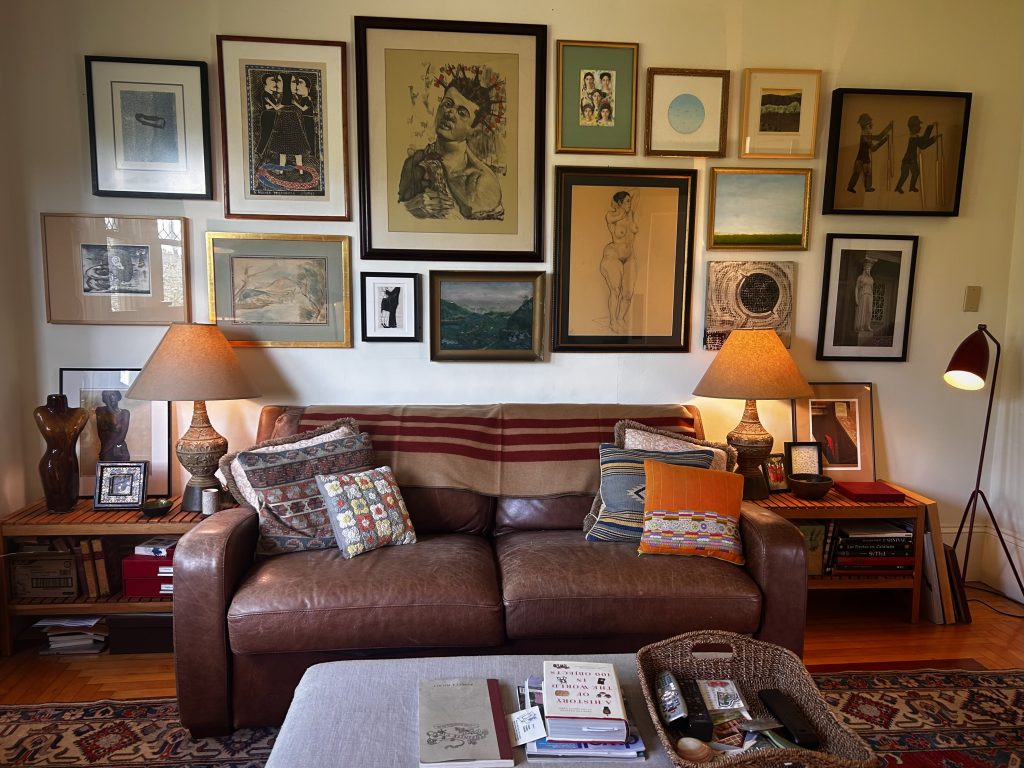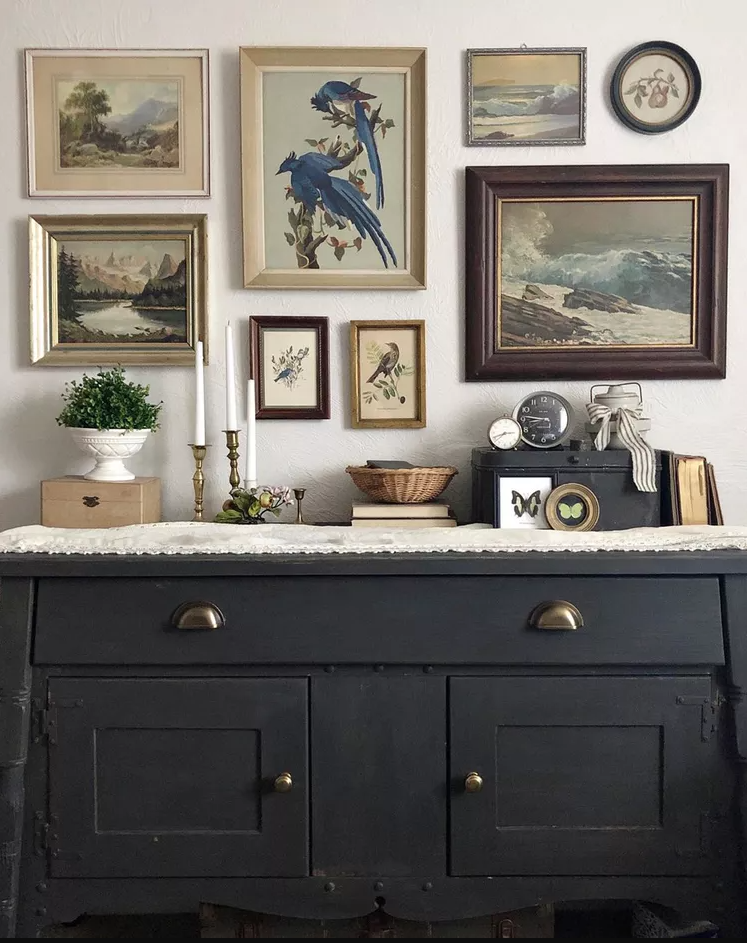A gallery wall can anchor a room, express your personality, and bring warmth and texture to a space. But achieving one that feels cohesive instead of chaotic requires more than a hammer and a handful of frames. It takes thought, rhythm, and an understanding of how color and harmony interact across a collection of diverse elements.
This guide will walk you through everything you need to create a gallery wall that feels elevated, curated, and truly yours.
🧰 What You’ll Need: Tools and Supplies
- Assorted artwork (photos, paintings, prints, textiles, etc.)
- Picture frames in chosen colors/materials
- Measuring tape
- Painter’s tape
- Level
- Hammer and nails or picture hooks
- Paper and pencil
- Optional: Paper cutouts of each frame (to test layouts)
- Optional: Command strips (for renters or damage-free hanging)
- Optional: Museum putty (to prevent frames from shifting on the wall)
🎨 Start With Color
Color is your first opportunity to create unity in your arrangement. Not everything needs to match, but there should be some consistency: a shared palette, a dominant hue that recurs, or complementary tones that interact well.
Frame colors can help tie everything together. A mix of woods, blacks, or metallics can work beautifully—as long as they feel intentional. Even an eclectic collection will feel harmonious when the color relationships are thoughtfully considered.
🖌️ Curate With Rhythm in Mind
Rhythm in a gallery wall refers to how your eyes move across it. A good wall carries a sense of movement and flow, created by repeating certain sizes, shapes, or visual weights.
- Mix large and small frames to build visual interest
- Combine horizontal and vertical orientations
- Keep consistent spacing (1.5 to 3 inches is standard)
- Repeat colors, styles, or themes at intervals
This repetition and variation create a beat your eyes follow, which helps the arrangement feel cohesive instead of random.

🎵 Build Harmony Through Relationships
Harmony doesn’t mean sameness—it means balance. Your pieces might vary in age, medium, or style, but should feel in conversation with one another.
You can group pieces by:
- Theme (all botanical, portrait, or abstract)
- Mood (soft and muted vs. bold and energetic)
- Medium (all black-and-white photography, or a balanced mix of media)
Harmony also comes from how you place things. An asymmetrical layout can feel balanced if the visual weight is evenly distributed. A centered grid can bring calm if your pieces are consistent in size and tone.
✏️ Plan Your Layout
There’s no one right way to lay out a gallery wall. It depends on your space, your artwork, and your personal style. Here are a few classic options:
- Grid: Uniform frames in straight lines, ideal for minimalism and symmetry
- Anchor + Cluster: One large central piece surrounded by smaller ones
- Linear Row: A straight line of artwork, great over sofas or hallways
- Salon Style: A looser, more organic arrangement that looks curated over time
Use the floor or paper cutouts taped to the wall to test layouts. Start with the central or anchor piece and build outward.
🌍 Hang With Care
- Choose a center line roughly 57–60” from the floor (average eye level)
- Use a level and measuring tape for alignment
- Take your time—adjust and step back often
- Secure frames with museum putty to prevent shifting, especially in high-traffic areas or older homes
✨ Let It Reflect You
A gallery wall isn’t just a decorating trend—it’s a mirror of your taste, your history, and your curiosities. Include art you love, things you’ve collected, pieces that were gifted or found.
Remember, it doesn’t have to be perfect to be meaningful. Let it grow over time, leave room to expand, and allow your wall to evolve as you do.
When you create a gallery wall with attention to color, rhythm, and harmony, you’re not just filling a wall—you’re composing a space that speaks.

Leave a Reply